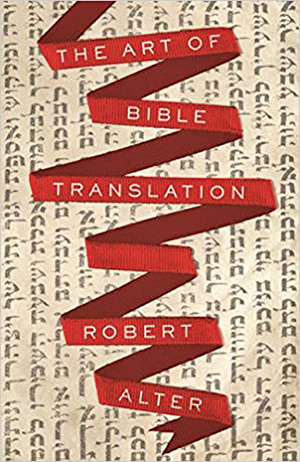
Reviewing: “The Art of Bible Translation,” by Robert Alter. Princeton University Press. 2019. English. Hardcover. 152 pages. ISBN-13: 978-0691181493.
The Talmud records that when the book of the Prophets was translated into Aramaic, there was an earthquake in the land of Israel. The message one could gather is that God doesn’t take kindly to the tampering of his holy books, even if it’s done by the greatest of sages.
Robert Alter is the emeritus professor of Hebrew and comparative literature at the University of California, Berkeley, and recently completed his landmark translation of the Bible into English. In “The Art of Bible Translation” he doesn’t quote that Talmudic passage, but he is quite aware of the countless challenges of being a Bible translator.
In this fascinating monograph, Alter details the trials and tribulations of his 20-year translation effort, and the lessons he learned along the way. As a literary critic, his command of the English language, appreciation of nuance and adept understanding of the rules of grammar enable him to focus on the nuances of the biblical text. He translation is a masterpiece, and this is his playbook.
Alter opens with the observation that the practice of translation entails an endless series of compromises. Some of them happy, some painful, and some not quite right because the translator has been unable to find an adequate English equivalent for what is happening, often brilliantly, in the original language. The challenge in translating the Bible is exacerbated given that its power is due in large part to the compactness of the Hebrew language.
With the exception of the King James version, Alter is somewhat critical of many of the other translations. A pervasive problem with other English versions is that the translators, for all their learning, had a rather imperfect grasp of biblical Hebrew. He also writes that there is a double problem with other modern translators that not only do they lack a clear sense of what happens stylistically in the Bible, but their notion of English style, its decorum and its expressive personalities, tend to be rather shaky.
While he is enamored by the King James version, Alter admits that its contains embarrassing inaccuracies, that its language of Renaissance English doesn’t resonate well today. Also, the King James translation committees didn’t pick up on those nuances of the Hebrew language and syntax, which takes away from the depth of the text.
In the first of the six chapters, Alter critiques most translations of the past few centuries. He notes that the Jewish Publication Society translation was painfully inept, the Revised English Bible turns beautiful bits of Hebrew narrative into something both ungainly and banal, and that other translations are made by teams that make decisions or even distort what is conveyed in the Hebrew text.
The areas he focuses on are syntax, word choice, sound play and word play, rhythm and the language of dialogue. The focus on rhythm is important, as the significant rhythms in the Bible have been overlooked in most translations.
As a literary critic, Alter emphasizes the importance of telling the story, so as not to get lost in the translation. He begins by stressing the literary character of the Bible, which he says most modern translations fail to recognize. His main critique of the other translations is that they obsess at the micro level of understanding each word, to the macro loss of the literary character of the Bible. The result being translation that don’t capture the depth and beauty of the Biblical narrative.
Many of Alter’s complaints are inherent to every translation; it is a near impossibility to reproduce the rhythm and sounds from one language to another. That can be observed in the book of Isaiah with his significant use of internal rhyming. Isaiah is also a great master of highlighting antithesis, by juxtaposing words that sound alike, but are opposite in meaning.
There are some aspects to Alter’s critiquing of other translations that I didn’t understand. For example, in the story of Yosef’s brothers who go to Egypt to buy food, he takes the JPS translation to task for translating the Hebrew word lishbor as to procure, forcefully noting that the use of procure is a stylistic blunder, that it is a verb at home in the directives of a quartermaster corps, but not in an ancient Hebrew dialogue.
As good as Alter is as a translator, the traditional reader is cautioned in accepting Alter’s translation as the final view, given that his approach is premised on acceptance of the documentary hypothesis. As to the translation itself, readers may want to heed the caution of Rabbi Meir Soloveichik, who in his critique of the translation, noted that it is best for the secular reader of the Bible, who seeks not prophecy but literary splendor.
Being a translator is like walking a tightrope. On one side, the translator must stay loyal to the text. On the other side, he must ensure the output is readable and meaningful. In this interesting and entertaining book, Alter shows how he walked that line.
By Ben Rothke










